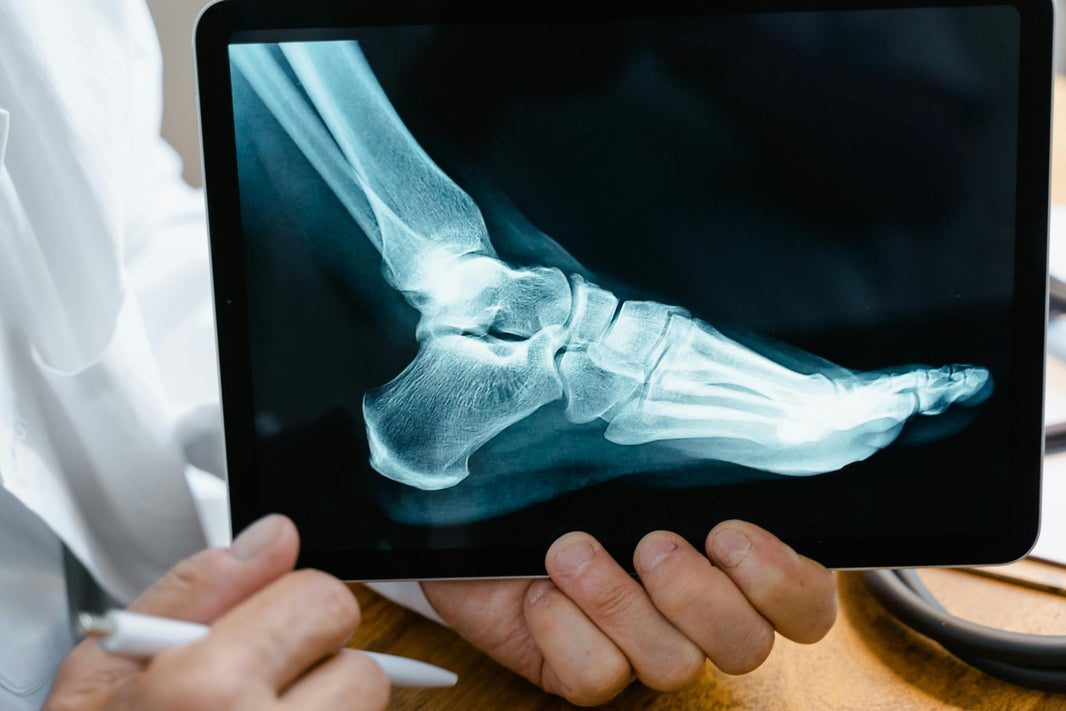If you’ve ever dealt with the stiffness and discomfort of osteoarthritis, you’re not alone. Millions of people worldwide struggle with this degenerative joint condition, searching for ways to ease the pain and improve mobility. While traditional treatments often focus on symptom management through physical therapy and medications, growing research points to the importance of diet in managing OA. Among dietary factors, omega-3 fatty acids stand out for their remarkable anti-inflammatory properties and potential to support joint health.
In this blog, we’ll take a closer look at how omega-3s can help alleviate osteoarthritis symptoms, discuss their sources, and dive into the scientific evidence behind their benefits. By the end, you’ll have a better understanding of how simple dietary adjustments could help you manage your OA pain more effectively.
What Are Omega-3 Fatty Acids and Their Role in Osteoarthritis?

Omega-3 fatty acids are vital polyunsaturated fats that support numerous bodily functions, especially in managing inflammation. Since the body cannot produce omega-3s naturally, they must be obtained through dietary sources or supplementation.. There are three main types:
- ALA (alpha-linolenic acid): ALA is rich in food sources like flaxseeds and walnuts. ALA must be converted into EPA and DHA in the body, although this process is inefficient
- EPA (eicosapentaenoic acid): Primarily found in fatty fishes like salmon, mackerel and sardines.EPA is known for its anti-inflammatory properties.
- DHA (docosahexaenoic acid): Also found in fish, DHA supports cellular health and has a role in reducing inflammatory responses.
In osteoarthritis, inflammation is a key player. As cartilage breaks down, inflammatory mediators like cytokines and prostaglandins are released, causing pain and further joint damage. Omega-3s can help regulate these inflammatory pathways, offering a natural way to reduce both pain and stiffness.
Understanding Osteoarthritis: Inflammation at the Core
Osteoarthritis develops over time as the cartilage in our joints wears away, causing pain and inflammation. Although OA was once thought to be a result of simple “wear and tear,” modern research suggests that chronic, low-grade inflammation is a central factor in its progression. Key inflammatory cytokines—such as interleukin-1β (IL-1β) and tumor necrosis factor-alpha (TNF-α)—accelerate cartilage breakdown and contribute to the painful symptoms of OA.
Traditional treatments like non-steroidal anti-inflammatory drugs (NSAIDs) can offer relief, but they often come with unwanted side effects, such as gastrointestinal issues and an increased risk of cardiovascular problems. This has sparked a growing interest in alternative treatments, such as omega-3 fatty acids, which naturally modulate inflammation without the negative side effects associated with pharmaceuticals.
The Science Behind Omega-3s for Osteoarthritis Relief
Osteoarthritis often involves chronic inflammation in the joints, which contributes to pain, swelling, and cartilage breakdown. Scientific research highlights how omega-3s can help:
Improved Physical Function: Regular omega-3 intake has been associated with improved physical function in OA patients:
- A 2019 study in Nutrients found that participants with higher omega-3 intakes experienced better mobility and less difficulty performing daily activities compared to those with lower intakes.
Slowing Cartilage Breakdown: Omega-3s may also slow the breakdown of cartilage, which is a hallmark of osteoarthritis:
- A study in Osteoarthritis and Cartilage (2015) demonstrated that omega-3 fatty acids could inhibit the activity of matrix metalloproteinases (MMPs)—enzymes that degrade cartilage. This protective effect suggests that omega-3s may not only relieve symptoms but also target the underlying mechanisms of OA.
- Animal studies, such as those published in Arthritis Research & Therapy (2017), show that diets enriched with omega-3s result in better cartilage preservation and less joint damage in OA models.
Anti-inflammatory Effects: The anti-inflammatory properties of omega-3s are particularly relevant for osteoarthritis:
-
A study published in Prostaglandins, Leukotrienes and Essential Fatty Acids (2016) showed that omega-3s reduce the production of pro-inflammatory prostaglandins and leukotrienes. This reduction can alleviate inflammation in the synovial membrane, improving overall joint health.
-
Omega-3s also promote the production of specialized pro-resolving mediators (SPMs), such as resolvins and protectins, which help resolve inflammation without compromising immune function.
Pain Management: Numerous studies suggest that omega-3s can reduce the intensity of pain and stiffness in individuals with OA:
-
A 2018 review published in Rheumatology International found that omega-3 supplementation led to a significant reduction in joint pain in individuals with OA. The review highlighted the role of EPA and DHA in suppressing inflammatory cytokines, such as interleukin-1 (IL-1) and tumor necrosis factor-alpha (TNF-α).
-
A randomized controlled trial (RCT) conducted in 2020 (Clinical Nutrition) evaluated the effects of fish oil supplementation (rich in EPA and DHA) in patients with knee osteoarthritis. After 24 weeks, participants reported a noticeable decrease in morning stiffness and joint pain compared to the control group.
Top Dietary Sources of Omega-3 Fatty Acids
Adding omega-3s to your routine is easier than you might think. Here are some tips:
-
Fatty Fish: Fish such as salmon, mackerel, sardines, herring, and tuna are among the richest sources of EPA and DHA. Just two servings of fatty fish per week can provide the recommended intake of omega-3s for most individuals.

-
Plant Based Sources: For vegetarians or those allergic to seafood, plant-based sources like flaxseeds, chia seeds, walnuts, and hemp seeds are good options. However, as these contain ALA, supplementation with algae-based omega-3s rich in EPA and DHA may be necessary for optimal benefits.

-
Supplements: For those who do not consume fish regularly, fish oil supplements are a convenient alternative. A typical dosage for joint health ranges from 1000–3000 mg of combined EPA and DHA per day after consulting a healthcare professional.

Supplementation: Is It Necessary?
While dietary sources are ideal, omega-3 supplements can be beneficial, especially for individuals with limited access to fatty fish or those who follow vegetarian or vegan diets.
Types of Omega-3 Supplements
-
Fish Oil: Rich in EPA and DHA.
-
Krill Oil: Contains omega-3s in a phospholipid form, which may enhance absorption.
-
Algae Oil: A plant-based alternative suitable for vegans.
-
Cod Liver Oil: Provides omega-3s along with vitamins A and D, though caution is needed to avoid excessive intake of these vitamins.
Omega-3s vs. Omega-6s: Striking the Right Balance
While omega-3s reduce inflammation, omega-6 fatty acids found in vegetable oils and processed foods can promote it when consumed in excess. Modern diets often have a high omega-6 to omega-3 ratio which can exacerbate inflammatory conditions like OA. To optimize joint health, aim for a balanced intake, ideally a 4:1 or lower ratio of omega-6 to omega-3.
Helpful Ways to Add Omega-3s to Your Diet
-
Start with Breakfast: Add ground flaxseeds or chia seeds to your morning oatmeal or smoothie.
-
Snack Smart: Swap chips or crackers for a handful of walnuts.
-
Upgrade Your Meals: Include fatty fish like salmon or sardines in your lunch or dinner twice a week.
-
Consider Supplements: If dietary intake is insufficient, talk to your healthcare provider about omega-3 supplements.
-
Check Labels: Choose products fortified with omega-3s, such as certain brands of eggs or plant-based milk.
Common Questions About Omega-3s and Joint Pain
1. How Long Does It Take for Omega-3s to Work?
The effects of omega-3 supplementation on joint pain and inflammation may take 2–3 months to become noticeable. Consistency is key for sustained benefits.
2. Are There Any Risks Associated with Omega-3s?
Omega-3s are generally safe, but excessive intake (above 3000 mg/day of EPA+DHA) may increase the risk of bleeding or interact with blood-thinning medications. Always seek guidance from a healthcare professional before beginning high-dose supplementation.
3. Can Omega-3s Prevent Osteoarthritis?
While omega-3s can slow cartilage degradation and reduce inflammation, there is limited evidence that they can completely prevent OA. However, incorporating them into an overall healthy lifestyle may reduce the risk of developing joint issues.
Conclusion
Omega-3 fatty acids offer a natural, science-backed way to ease osteoarthritis symptoms and improve joint health. By reducing inflammation, slowing cartilage breakdown, and enhancing joint lubrication, these essential fats can play a vital role in your pain management strategy. Best of all, they bring additional benefits, like improved heart and brain health.
Always seek guidance from a healthcare professional before making major changes to your diet or starting a new supplement routine. A well-rounded approach, combining omega-3s with other lifestyle interventions like exercise and weight management, can offer the best outcomes for osteoarthritis relief. If you’re ready to take control of your osteoarthritis symptoms, start by making small changes to your diet. Your joints will thank you!
References
-
Calder, P. C. (2015). Omega-3 polyunsaturated fatty acids and inflammatory processes: Nutrition or pharmacology? British Journal of Clinical Pharmacology.
-
P Peanpadungrat., et al. (2015). Efficacy and Safety of Fish Oil in Treatment of Knee Osteoarthritis. Journal of the Medical Association of Thailand.
-
Z Kavyani (2022). Efficacy of the omega-3 fatty acids supplementation on inflammatory biomarkers: An umbrella meta-analysis. International Immunopharmacology.








